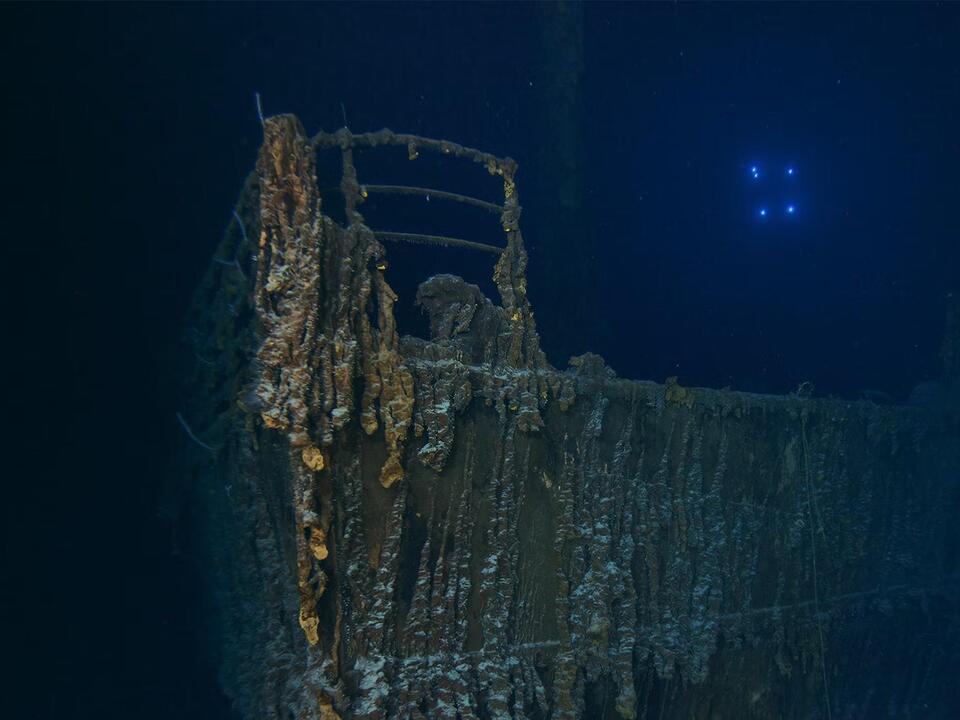Physical Address
304 North Cardinal St.
Dorchester Center, MA 02124
Physical Address
304 North Cardinal St.
Dorchester Center, MA 02124

A recent expedition to the Titanic has illuminated the gradual decay of the world’s most famous shipwreck. The iconic bow, often evoked in James Cameron’s 1997 film, has reportedly lost a significant portion of its railing.
Originally considered the largest and most luxurious liner ever built, the Titanic sank after colliding with an iceberg during its maiden voyage from Southampton to New York in April 1912. Once touted as “unsinkable” due to its advanced engineering, the ship tragically carried insufficient lifeboats for all its passengers. In the end, over 1,500 lives were lost, making it one of the deadliest maritime disasters in history.
The wreck remained undiscovered for an astonishing 73 years until a French-American expedition led by Jean-Louis Michel and Robert Ballard found it in 1985, deep beneath the North Atlantic waves. Since then, numerous expeditions have taken place, including one last summer involving a tragic incident with the Titan submersible, reigniting debates over the ethics surrounding visits to this historic grave site.
Tomasina Ray, director of collections at RMS Titanic Inc., expressed her sentiments regarding the wreck’s condition: “The bow of Titanic is just iconic. You have all these moments in pop culture – and that’s what you think of when you think of the shipwreck. And it doesn’t look like that anymore.” She emphasized the constant deterioration: “People ask all the time: ‘How long is Titanic going to be there?’ We just don’t know but we’re watching it in real time.”
As part of the deterioration, Ray noted that it seems the metal railings eventually gave way and fell off. Yet, not everyone agrees that the changes are as drastic as they appear. Descendants of Titanic victims argue that the alterations in the wreckage might be more superficial than significant.
The Titanic Memorial Lighthouse remarked, “While RMS Titanic Inc. calls this a ‘drastic change,’ it’s merely superficial. Both port and starboard railings were removable to allow for the main deck anchor to be deployed by the crane.” They raised the question of whether the dislodged railings might have been affected by the propeller wash from the Titan’s submersible during its ill-fated expedition.
This summer’s exploration marked the first expedition since the Titan incident, executed by RMS Titanic Inc., which holds exclusive salvage rights to the wreck. The company’s stated mission is to uphold the ship’s legacy through ongoing research and artifact recovery.
This expedition was noteworthy in that it aimed to complete the most detailed 3D imaging scan of the wreck to date. Although no artifacts were retrieved during this mission, researchers were successful in locating objects of historical significance for potential future recovery. A remarkable find was a statue from the first-class lounge that had been destroyed during the sinking.
The statue, known as the Diana of Versailles, was previously discovered in 1986 but had not been seen until now. Titanic researcher James Penca described the emotional significance of the find: “It was like finding a needle in a haystack, and to rediscover it this year was momentous.” He elaborated on the importance of the first-class lounge, calling it “the most beautiful, and unbelievably detailed, room on the ship.” Unfortunately, during the sinking, the lounge was destroyed, and the statue was lost among the debris.
Penca believes that the rediscovery of the statue underscores the need for ongoing exploration of the wreck site. He stated, “This rediscovery of the Diana statue is the perfect argument against leaving Titanic alone. This was a piece of art that was meant to be viewed and appreciated.” He expressed the desire to bring the statue back to light: “Now that beautiful piece of art is on the ocean floor… in pitch black darkness, where she has been for 112 years.”
Addressing the ethical concerns surrounding the exploration of the Titanic, especially after the previous year’s tragic commercial expedition, this summer’s mission opted to use remotely operated vehicles (ROVs) instead of manned submersibles.
The complexities of balancing public interest, historical preservation, and ethical considerations continue to shape the future of Titanic expeditions and research.
Source: The Independent



